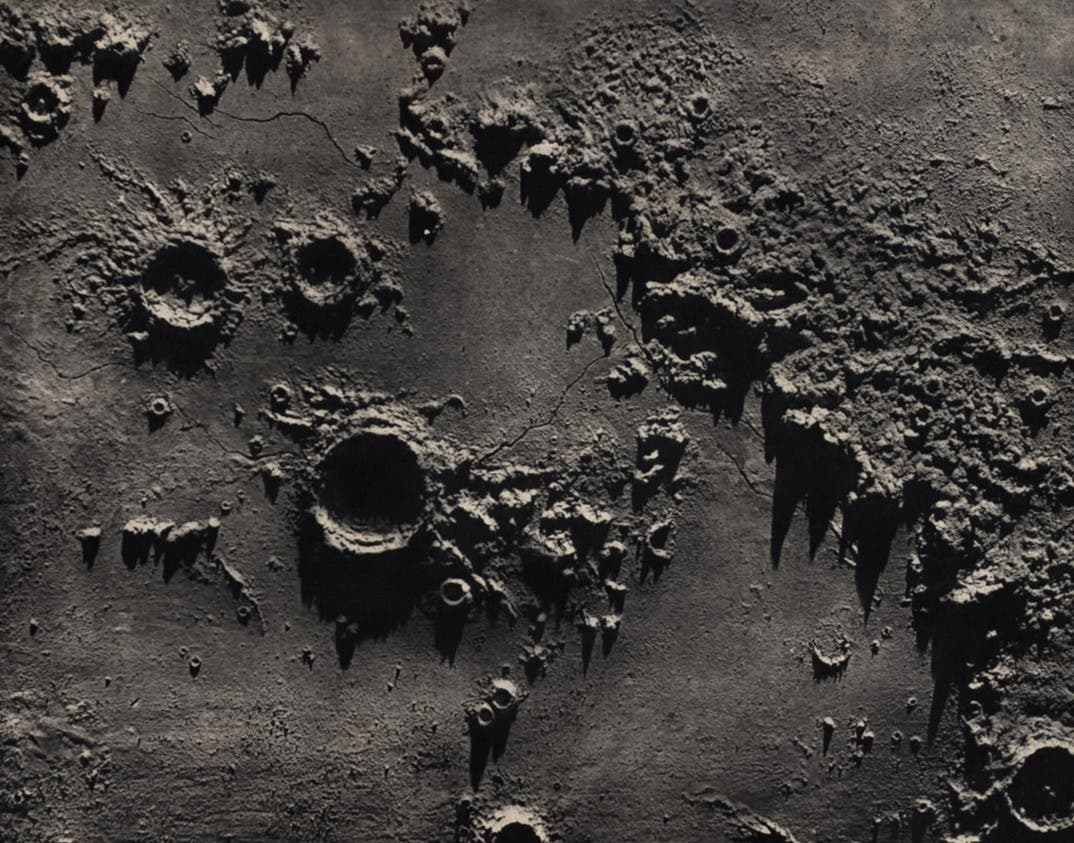Hooke, Robert (1635-1703).
Micrographia. – London: Printed by Jo. Martyn and Ja. Allestry, 1665.
This seminal work on microscopy is more noted for its impressive engravings of magnified insects than for its contributions to lunar topography. The work, however, contains the very first attempt to delineate a particular lunar feature, in this case the crater Hipparchus, which is just south of the center of the moon. Hook also attempted to determine whether lunar craters were formed by impact or by volcanic action. He dropped balls into wet clay to simulate impact, and heated alabaster to produce bubbling volcanoes, and decided that the moon more closely resembled the pock-marked alabaster.

